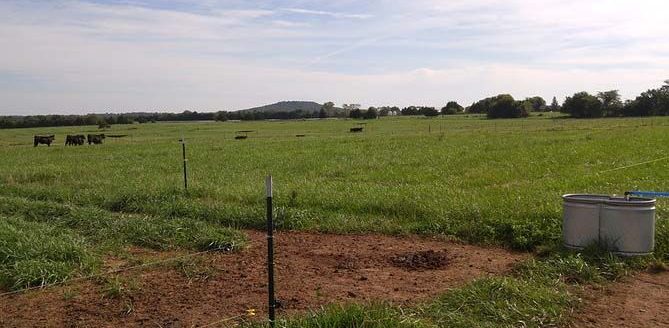Beef cattle grazing on lush, green pastures is a common sight when driving through the Kansas Flint Hills in the late spring.
Experts from Kansas State University’s Beef Cattle Institute discussed steps for managing the spring grazing season recently on the weekly podcast Cattle Chat.
Kansas State University beef cattle extension specialist Bob Weaber advised producers to begin by assessing their current facilities.
“Start by doing a perimeter check on the fences and do any necessary maintenance as well as checking on the water supply,” he said. “Think about any changes that need to be made in the grazing plan from last year before the cows are turned out.”
As producers evaluate the fences, K-State veterinarian Brad White also encouraged them to walk through the pastures to see how much green forage is available among the dormant grasses.
“Just because the pasture is green doesn’t mean it has enough nutrient value for the cows,” Weaber said. Green grass often has high water content, so the nutrient availability is limited.
“Most pastures this time of year are in fair condition, which means they will provide 50 to 100 pounds of dry matter per acre. Producers can supplement with hay or 20% range cubes to give the cows energy with the appropriate amount of protein,” Weaber said.
It is also important to provide salt and mineral for the cows, said K-State veterinarian Bob Larson. In particular, he recommends a high magnesium mineral early in the spring grazing season.
“If the cow is not ingesting enough magnesium from the grass or through a supplement, she might experience grass tetany, which impacts her nervous system by causing her to be weak or even become aggressive,” Larson said.
He added that grass tetany is more common in the spring because the cooler soil temperatures keep the magnesium from rising to normal levels, as it does in the summer.
White agreed that magnesium supplementation was important and encouraged producers to monitor consumption because some cows will prefer the taste of the mineral more than others.
“Grass tetany can occur in a herd even when a high magnesium mineral is provided, which is why it has to be monitored so closely,” Larson said.
Along with monitoring mineral consumption, the experts agreed that it is important to assess body condition scores ahead of turnout. This will help producers determine the appropriate stocking rate for the herd.
“Good grass managers monitor both the cows and forage availability and make adjustments throughout the grazing season,” Larson said.
Larson and Weaber recommended producers take a yardstick to measure the height of the grass and then calculate forage accordingly depending on whether it is a warm season or cool season grass.
“Typically, we want to let the cattle graze down half of what forage is available so if there is eight inches of forage out there let them graze it down to four inches,” Larson said.
White added: “You want to have enough of a base left so the grass can regrow in a reasonable time period.”
Aside from managing the grass ahead of turnout, the experts encouraged producers to work with their veterinarians to make sure the cows have been given updated vaccinations.
“With mature cows there is some flexibly in the time of year vaccines are given, so it is important for producers to work with their veterinarians to build a program that makes the most sense for their operations,” Larson said.

